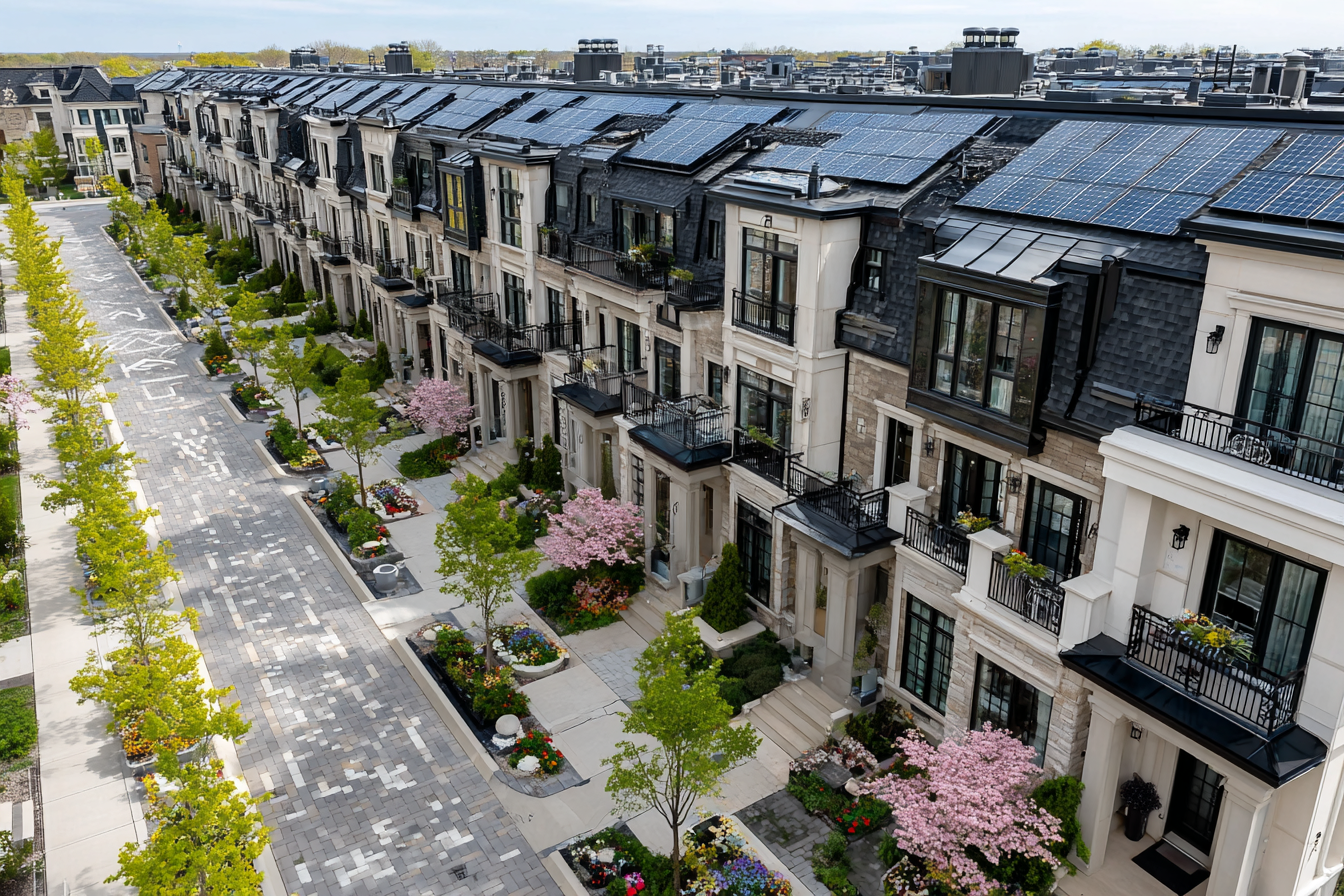Case Study: How Markham’s Berczy Glen Geothermal Community Became a Net-Zero Leader

Written by Solenery
2 min read
Introduction
Canada’s path to net-zero is paved with pioneering projects that demonstrate how collaboration and innovation come together to create cleaner, more sustainable communities.
One standout example is Markham’s Berczy Glen neighborhood—the country’s first large-scale residential geothermal community.
This project showcases how municipal leadership, community partnerships, and strategic funding can drive net-zero success at the neighborhood level.
In this post, we’ll explore the story behind Berczy Glen, the role of key partners like the Federation of Canadian Municipalities’ Green Municipal Fund (GMF), and the lessons other communities can take from this ambitious initiative.
What Is the Berczy Glen Geothermal Community?
Berczy Glen is a new residential subdivision in Markham, Ontario, designed to be a net-zero-ready community powered by geo-exchange systems—also known as geothermal heating and cooling.
Instead of traditional fossil fuel heating, homes tap into the earth’s stable temperatures to stay comfortable year-round with minimal emissions.
Key Features:
- Approximately 300 homes connected to a shared geothermal district energy system
- Use of ground-source heat pumps for heating and cooling
- Significant reduction in greenhouse gas emissions compared to conventional homes
- Designed with energy efficiency and sustainability as core principles
How Did Partnerships Make This Possible?
The success of Berczy Glen relied heavily on multi-sector collaboration.
Partners Involved:
- City of Markham: Provided leadership, zoning approvals, and municipal support
- Mattamy Homes: Major developer integrating geothermal technology into housing design
- Federation of Canadian Municipalities (FCM): Delivered critical funding through the Green Municipal Fund
- Natural Resources Canada (NRCan): Provided additional funding and technical guidance
- Local utilities and community stakeholders: Supported infrastructure and outreach
Collaboration Highlights:
Early engagement between city planners, developers, and energy experts ensured design feasibility.GMF funding helped reduce upfront capital costs and de-risk the project.
Community engagement fostered resident buy-in and education about geothermal benefits.
What Funding Made Berczy Glen Possible?
The project secured $8.7 million in funding through a combination of GMF grants and NRCan programs.
Funding Benefits:
- Reduced financial risk for the developer and municipality
- Allowed investment in innovative technology without increasing home prices
- Enabled extensive community education and outreach efforts
Why Funding Partnerships Matter:
Such financial support, contingent on collaboration, made this ambitious project feasible and scalable—a model for other municipalities.
Lessons Learned and How Other Communities Can Replicate This Success
Berczy Glen offers valuable insights for communities aiming to develop net-zero neighborhoods.
- Start early with cross-sector collaboration: Engage municipalities, developers, funders, and communities in the planning stages.
- Leverage funding programs that encourage partnerships: GMF and NRCan’s grants prioritize collaborative projects.
- Invest in community engagement: Educate residents about geothermal benefits and energy savings.
- Design for scalability: Build infrastructure that can expand as the community grows.
Conclusion
Markham’s Berczy Glen geothermal community stands as a beacon of what’s possible when vision, partnership, and funding come together.
It’s proof that net-zero neighborhoods are achievable today—across Canada.